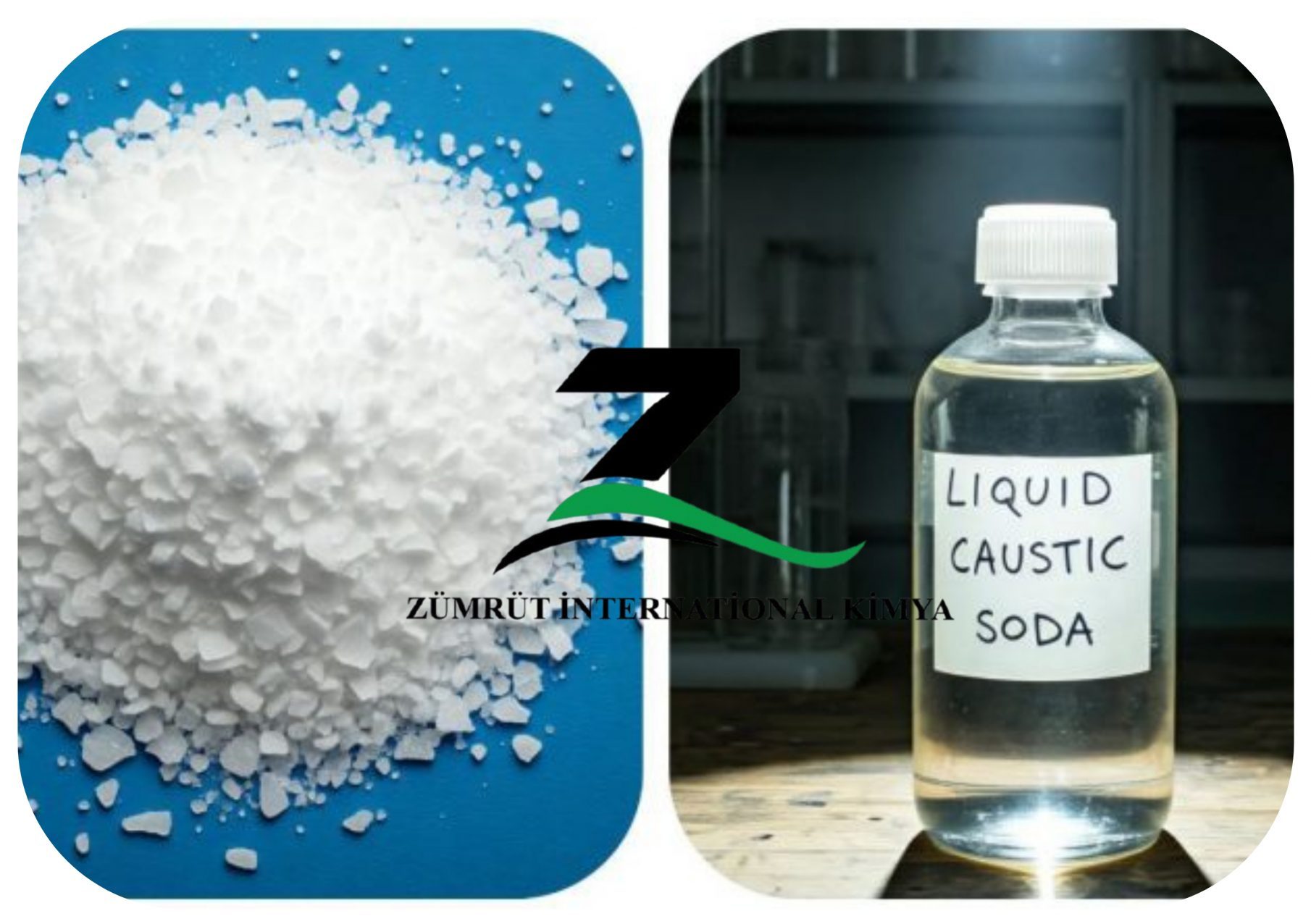
The first difference between caustic soda flakes and liquid caustic soda is their appearance. In this article, we want to talk more about the difference between these two products.
Description
Caustic soda, a vital chemical in many industries, is manufactured and marketed in two forms: solid caustic soda flakes and liquid caustic soda.
Each form has unique properties that influence its applications and management. Solid caustic soda, often known as flakes, is a solid and readily transportable form that is commonly employed in industrial procedures requiring accuracy.
However, because of its liquid condition, liquid caustic soda is preferable in procedures that need easy and precise injection. This article investigates the differences between caustic soda flakes and liquid caustic soda, evaluating their properties, applications, and the factors that influence their adoption in various sectors.
Understanding both types of caustic soda allows you to make more informed decisions about their safe and efficient use.
Different uses
Caustic Soda Flakes
Caustic Soda Flakes are another common form of sodium hydroxide. They are solid, white flakes with similar properties to caustic soda pearls. Here are some key applications of caustic soda flakes:
Soap and Detergent Production: Caustic soda flakes are essential in the production of soaps and detergents.
Petroleum Industry: They are used in refining petroleum products.
Aluminum Production: Caustic soda is crucial in the extraction of alumina from bauxite ore.
Textile Industry: In textiles, caustic soda flakes are used for mercerization, a process that enhances the luster and strength of fabrics.
Caustic Soda Liquid
Caustic Soda Liquid, also known as sodium hydroxide solution, is a versatile and easily handled form of caustic soda. It is usually available in various concentrations, and its applications include:
Cleaning and Degreasing: Caustic soda liquid is an effective cleaner and degreaser, making it valuable in industrial cleaning applications.
Drain and Pipe Maintenance: It is use to clear clog drains and pipes due to its ability to dissolve organic matter.
Water Treatment: In water treatment plants, caustic soda liquid is use for pH adjustment and the removal of impurities.
Chemical Manufacturing: It is a key ingredient in the production of chemicals, including plastics and pharmaceuticals.
Main Difference Between Caustic Soda Flakes and Liquid Caustic Soda
Caustic soda flake and liquid caustic soda are both forms of sodium hydroxide, widely used across industries. The most noticeable difference lies in their physical states:
liquid caustic soda is a clear solution, easily mixable with other substances, while caustic soda flakes are solid crystals available in various package sizes. This difference significantly affects their handling and transport methods.
In terms of purity, caustic soda flakes are usually more concentrated, with purity levels between 98% and 99%, while liquid caustic soda typically contains up to 50% concentration due to the presence of water. This makes caustic soda flakes more suitable for industrial uses requiring high sodium hydroxide concentration.
Storage and Handling
Storage conditions vary significantly between the two forms. Caustic soda flakes are more convenient to store, as they require no special containers and are less prone to spillage.
Liquid caustic soda requires secure, airtight containers to prevent leakage and evaporation, and handling it involves safety measures to avoid contact with skin and eyes due to its corrosive nature.
Furthermore, the solid form of flakes allows for easy transportation over long distances without the need for specialized transport equipment, unlike liquid caustic soda.

